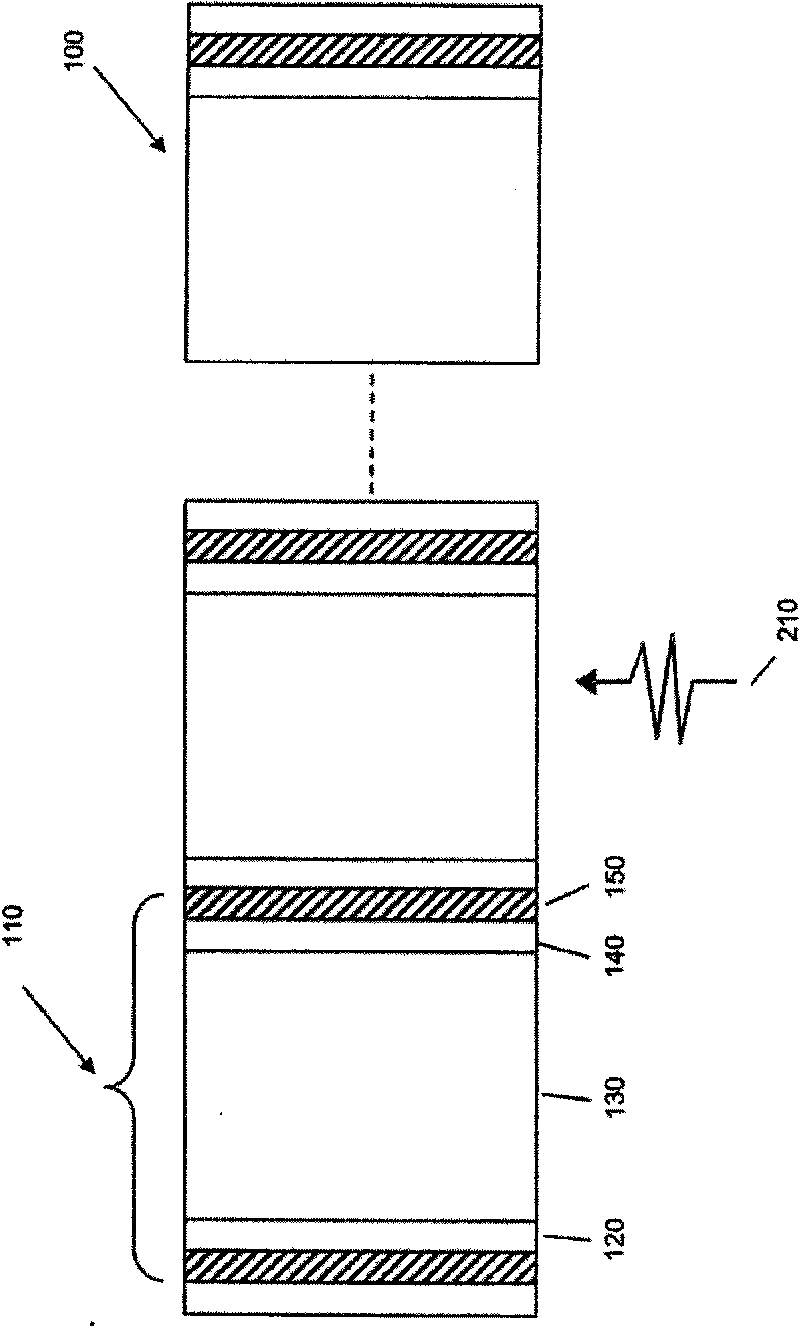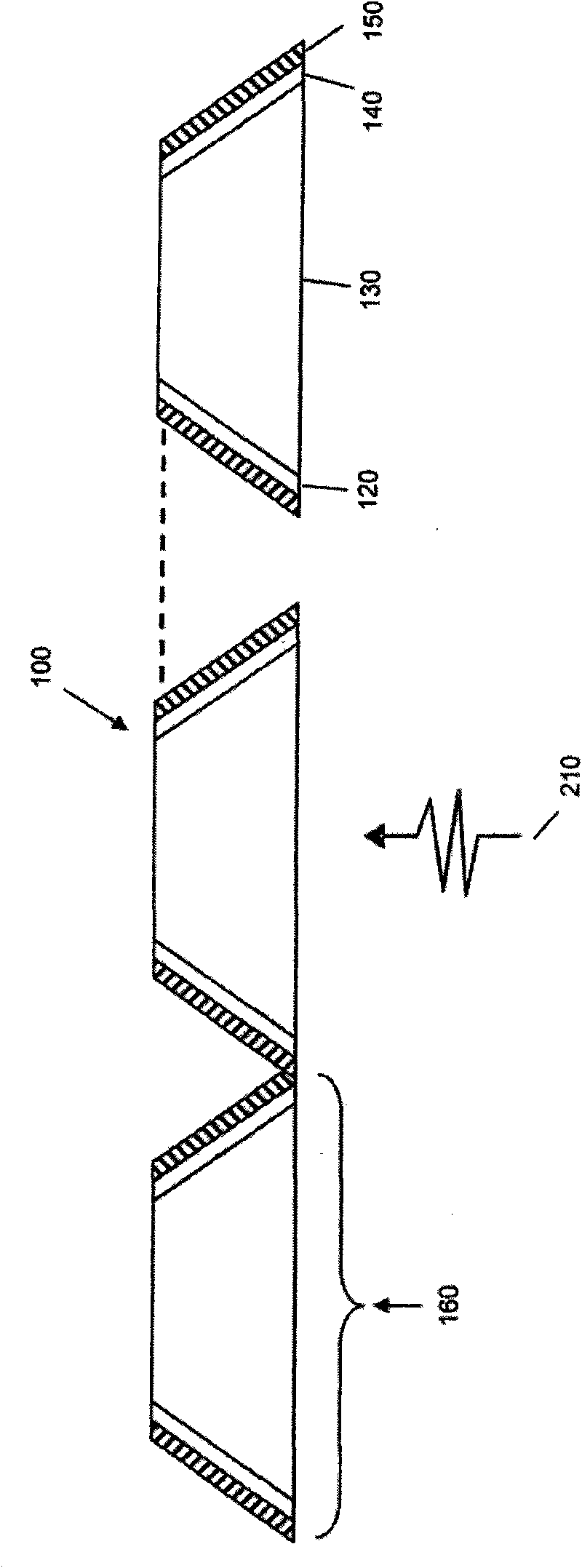Solar converter and compound converter
A converter, solar technology, applied in semiconductor devices, electrical components, circuits, etc., can solve problems such as conversion efficiency limitation, three-node limitation, low efficiency, etc.
- Summary
- Abstract
- Description
- Claims
- Application Information
AI Technical Summary
Problems solved by technology
Method used
Image
Examples
Embodiment Construction
[0087] 1. Introducing the multi-node converter 100 .
[0088] see Figure 1 to Figure 5 , the multi-node converter 100 may include one to thousands of photoelectric nodes 110, each photoelectric node 110 needs a hypertonic (10 19 / CM 3 ) n+ semiconductor layer 120, a low permeation (10 16 / CM 3 ) n-type high crystal semiconductor layer 130 and a hypertonic (10 19 / CM 3 ) p+ semiconductor layer 140 . A metal foil or eutectic metal layer 150 is formed between two adjacent n+ and p+ layers to reduce the overall series resistance of converter 100 .
[0089] As a preferred embodiment, making the multi-node converter 100 requires all nodes 110 to be electrically connected in parallel and in series so as to form an incremental voltage; refer to Figure 1 to Figure 5 .
[0090] The first component in this preferred embodiment is the node region and the doping layer of the multi-node converter 100; the node region and the doping layer have a high crystalline order in order to a...
PUM
 Login to View More
Login to View More Abstract
Description
Claims
Application Information
 Login to View More
Login to View More - R&D
- Intellectual Property
- Life Sciences
- Materials
- Tech Scout
- Unparalleled Data Quality
- Higher Quality Content
- 60% Fewer Hallucinations
Browse by: Latest US Patents, China's latest patents, Technical Efficacy Thesaurus, Application Domain, Technology Topic, Popular Technical Reports.
© 2025 PatSnap. All rights reserved.Legal|Privacy policy|Modern Slavery Act Transparency Statement|Sitemap|About US| Contact US: help@patsnap.com



